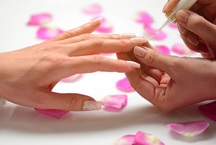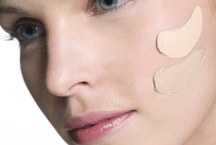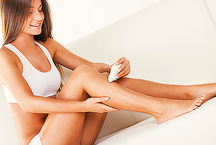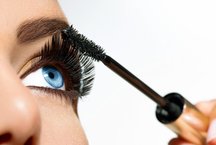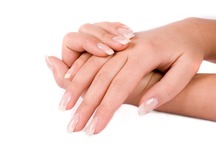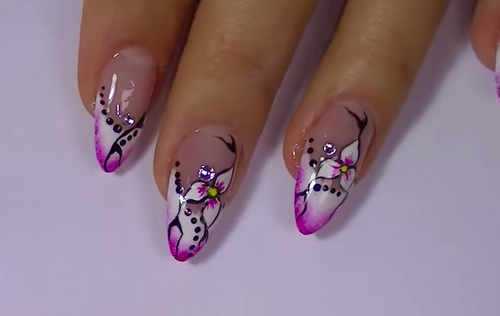
Nail extension is one of the most popular services of the nail salon, which solves the problem of a perfect manicure for a modern woman. But for some reason, some masters recommend only gel, others definitely recommend acrylic. Where is the truth? Let's try to understand the intricacies of gel and acrylic nail extensions and answer the question: “Which material is better: gel or acrylic?”
What is more harmful: gel or acrylic?
More often than others, you can find the opinion that acrylic is harmful to the nails, as it has a more “nuclear” composition. This is nothing more than a myth. You need to know that both gel and acryl are acrylates, that is, they have a similar chemical composition and affect the nail plate in about the same way. In this case, there are cases of allergy to both materials. Neither gel nor acrylic building will not make your own nails healthier and stronger, moreover, after either of these two procedures, they will need restoration. Therefore, none of the compared materials is more useful and more harmful than the other.
What is the difference between acrylic and gel?
Nail gel is a fluid substance that looks like a nail polish and spreads along the nail, much like regular nail polish. Gels are photosensitive (freeze under the action of UV rays) and non-photosensitive (a catalyst is required for curing). You can also find single-phase, two-phase and three-phase gels for building. The gel has no smell, which is a huge advantage.
With acrylic everything is both simpler and harder at the same time. Acryl is a powder that, when mixed with a special liquid (liquid, monomer), turns into a thick plastic substance that quickly sets in air. Acrylic does not flow, does not require any special means for hardening. But they need to work quickly, as it freezes in a few minutes. A big minus of acrylic - a strong "dental" smell is eliminated.
A very detailed account of the difference between gel and acrylic can be found in the video:
Gel and acrylic nail extensions: technology features
Both gel and acryl can be applied on natural nail, as well as used for building on tips or forms. Many people believe that acrylic buildup is longer and more complex, but objectively both procedures last about the same and contain a similar set of steps.
With both types of extension procedure consists of three steps:
- Preparation of the nail plate and application of primer (bonder).
- Actually applying a modeling material.
- Drawing a finishing covering.
The first and third stages when building up a gel or acrylic are almost the same, the difference is noticeable only at the second stage and it is connected with the peculiarities of the “behavior” of the gel or acrylic.
The gel is applied to the nail with a brush like a lacquer, then cured with a UV lamp or catalyst. If during the application of the gel an error occurred (flowing over the cuticle, etc.), after curing it can be eliminated only by cutting, in serious cases, the nail will have to be redone completely.
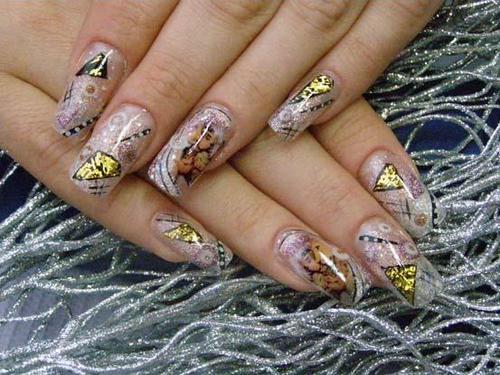
Unlike the gel, the acrylic composition must first be "prepared." The brush is dipped in liquid, then in acrylic powder, as a result a ball is formed on the tip of the brush, which must be carefully transferred onto the nail and quickly distributed. Already frozen coating is easy to correct using a special softening acrylic composition. The acrylic coating is completely impenetrable, so a fungus can multiply under it during the socks. To prevent this from happening, the nails are treated with an antifungal compound before applying acrylic.
The appearance of nails: which is better - gel or acrylic?
The indisputable advantage of building gel is that it gives a brilliant and perfectly smooth coating, allowing the nails to always look well-groomed. As a result of using acrylic, the layer turns out to be matte, and in order to add shine to the nail, it is necessary to additionally varnish. But acrylic has a significant plus: such a coating, matched to the tone of a natural nail, makes extension nails very natural and almost indistinguishable from real ones.
Both gel and acrylic give a lot of space for the realization of the most daring ideas of nail design:
- Modeling. For gel modeling, only special 3D gels are used, which are usual for this purpose too liquid. Thicker and more plastic acrylic mass is just an ideal material for modeling. Sculpting with acrylic gives the most amazing results that the gel is not capable of.
- "Aquarium" nail design - is the location of the jewelry under the transparent layer, giving the image a three-dimensional effect. For both types of extensions, glitters, sand, rhinestones, dried flowers, fimo foil or figurines, as well as bas-reliefs (convex drawings) can be placed under the layer of transparent gel. The advantage of acrylic here - in the wide possibilities of volumetric modeling, gel - in a stunning gloss, reminiscent of liquid glass.
- French. Popular French manicure is done with both gel and acrylic, but girls who have tried both methods claim that acrylic french is more natural, neat and airy. However, a good master and gel french goes very beautiful, so this is a matter of taste.
Features socks gel and acrylic
The gel is similar in elasticity with a natural nail, bends with it. It can be varnished on top and treated with liquid with acetone, without fear for its safety. In general, it is less capricious in socks than acrylic, and has only one really weak point - low temperatures (the gel cracks from frost and sudden changes in temperature). At the same time, it is more susceptible to breaking than acrylic.
Acrylic is considered a more durable and more flexible coating for nails and, compared to gel manicure, breaks much less. The disadvantages of acrylic in socks include:
- matte coating - in order to achieve shine, you need to cover your nails with clear lacquer or, when building and correcting, order an additional service - covering with “liquid glass”, which increases the total cost of work;
- discoloration - acrylic may turn yellow under the action of various chemicals, such as regular nail polish or household chemicals;
- Do not use nail polish remover with acetone - the coating may crack.
Of course, when building both ways nails should be protected from excessive mechanical stress. However, it was noted that during the gel extension it is the extension (artificial) part that breaks without damaging the regrown natural nail, and with acrylic, the own nail more often breaks, which is much more painful and offensive.
Correction of gel and acrylic nails
The concept of correction includes applying a modeling agent (gel or acrylic) to the regrown part of the nail plate, applying a new layer to the entire nail in order to hide scratches and minor damages, and repair detached and chipped artificial plots.
The frequency of correction does not depend on the material of the extension (gel or acrylic), but on the growth rate of its own nails. Usually it is done every 2-4 weeks. The gel and acrylic correction technologies are very similar, the difference, as is the case with the build-up, is only in the features of the coating itself. But there is an important difference: the damaged gel nail must be completely redone. Acrylic marigolds can be “repaired” without removing the accumulated material, which is much faster (unfortunately, it is not cheaper).
Removal of gel and acrylic
A significant drawback of the gel coating is that when removing the enlarged nails, the gel from the nail must be long and tedious to file away.A lot of fine dust is produced during cutting (there are known cases of allergies to this dust). It is categorically not recommended to do removal of gel nails at home - there is a very high risk of damaging your nails.
The removal of acrylic is more “civilized” - it is enough to hold the nails in a special solution, after which the acrylic softens and is easy to remove with a spatula. This procedure can be done independently by purchasing the desired solution in the store. Unfortunately, in both cases, your own nails need to be restored after removal.
The difference in prices for nail extensions gel and acrylic
Building acrylic still less popular in Russian salons, rather than gel, good "master acrylic" are worth its weight in gold. Therefore, often the prices for acryl are overstated, which is absolutely unjustified in terms of the costs of conducting both procedures. In serious stores, prices for acrylic and gel extensions are gradually being leveled, and now they are almost the same:
- build-up under the lacquer - 2000-3000 TR,
- build-up with an elongation of more than 3 mm - from 3000 tr,
- French - 2700-3800 tr.
- coating without extension - 1000-1300 p.,
- correction - from 50 to 80% of the cost of building,
- reworking one nail - 10% of the cost of building,
- design - from 70 p. for the nail,
- modeling - 50-150 p. for the nail.
Prices for withdrawals are more varied and range from 500 to 1300 r. for the whole procedure.
Gel and acrylic nail extensions: video
Video about gel nail extension:
Video about nail acrylic:
So what to choose: gel or acrylic?
As can be seen from our comparative review, the procedures for building up gel and acrylic have their own characteristics and slightly different possibilities, but in general, the differences between them are not as great as it may seem at first glance. The skillful hands of the master work wonders with both gel and acrylic. The choice is yours!

